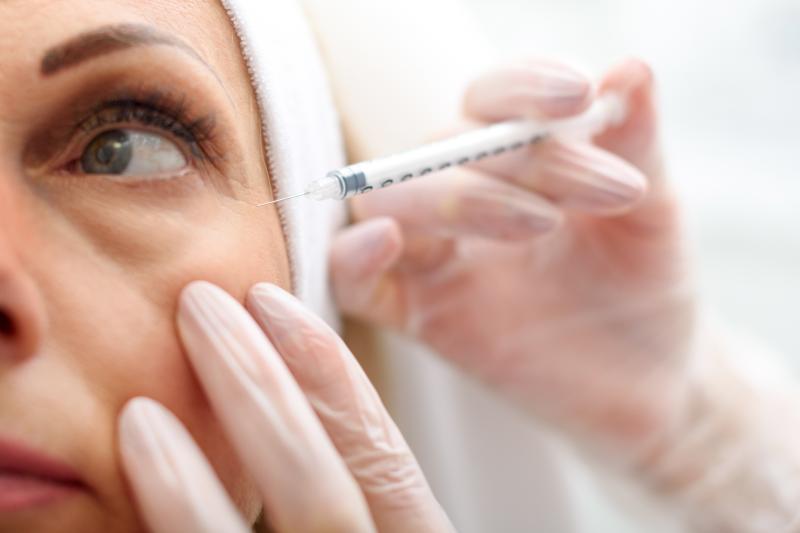
Delayed adverse events (DAEs) associated with hyaluronic acid fillers (HA-Vs) appear to be relatively rare, a new study reports.
The researchers conducted a long-term retrospective analysis of 9,324 HA-V treatments in 4,500 patients. Over 9 years of chart follow-up, 44 patients (aged 27–79 years; 34 women) experienced DAEs. Overall, a cumulative of 19,498.5 mL of fillers was administered. Those who developed DAEs received 0.5–13.3 mL of HA-V in multiple locations.
The resulting combined incidence rates of DAEs were 0.98 percent per patient, 0.47 percent per treatment, and 0.23 percent per 1-mL syringe. The most common sites of injection were at the mid- and lower face. Almost half of the participants were given more than one HA-V treatment before DAEs developed.
The median time to DAE onset from the most recent HA-V injection was 4 months. Delayed swelling and nodule formation were the most common AEs, each recorded in 29 patients. Other frequent side effects included erythema, warmth, tenderness, and pain. Two patients experienced DAEs with more than one episode.
Notably, all cases of DAEs were resolved, with six patients requiring no treatment. The most common treatment was oral prednisone (58 percent). Other modalities included hyaluronidase (45.4 percent), oral antibiotics (41.0 percent), and intralesional triamcinolone acetonide (34.1 percent).
“Patients who experienced DAEs received a larger cumulative amount of HA-V than those who did not,” researchers said. “Further investigation of possible contributing factors will give clinicians a clearer idea of the relationship, if any, between volume and DAE risk.”